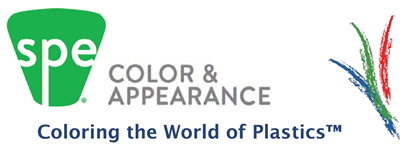A Method to Evaluate the Near and Far Aspecular Reflectance Differences of Organic Pigments And Possible Causes
James E. Rediske
Technical Specialist
BASF Corporation
[one_half]Jim is a 1974 graduate of the University of Wisconsin – Whitewater with a Bachelor’s Degree in Chemistry. After holding a variety of manufacturing, research, and marketing positions, Jim finally found his way to the field of Color Chemistry in 1989. First with Columbian Chemicals working with carbon black as a pigment and then followed by more than 20 years with Miles – Bayer – Lanxess as a Technical Specialist working with iron oxides and organic pigments, and then with polymer soluble dyes. Jim is currently a Technical Specialist with BASF Colors & Effects USA LLC. in Southfield Michigan. In this role Jim has technical responsibility for all colorants in the BASF portfolio that have application in the plastics industry. Jim serves on the Board of Directors for the Color and Appearance Division of the SPE. He is a frequent presenter at RETECs and ANTECs, ins an invited speaker, has received a Best Paper Award for RETEC, and has had one of his papers published in Plastics Engineering.
[/one_half] [one_half_last]
Abstract
A Review and Examination of color travel of organic pigments in thermoplastic materials is undertaken. A method of how to quantify and understand the color changes and how to predict performance based on particle morphology is put forward.
The startling performance of effect pigments and their amazing transformations of appearance has challenged those in the color industry for a number of years. This property, correctly referred to as near and/or far aspecular reflectance, may be more commonly known by its generic term “travel”: the difference between flash (facing you), and flop (the down angle away). Recent investigations have identified a similar “flop” phenomenon observed in organic pigments in full shade. The first goal of this paper is to further define this phenomenon and discuss a method by which it can be quantified. It is hypothesized that this behavior may be related to particle size, distribution and/or pigment crystal morphology. The second goal is to provide examples of this phenomenon, report on the technique, and use this technique to examine the behavior relative to the above pigment characteristics.

